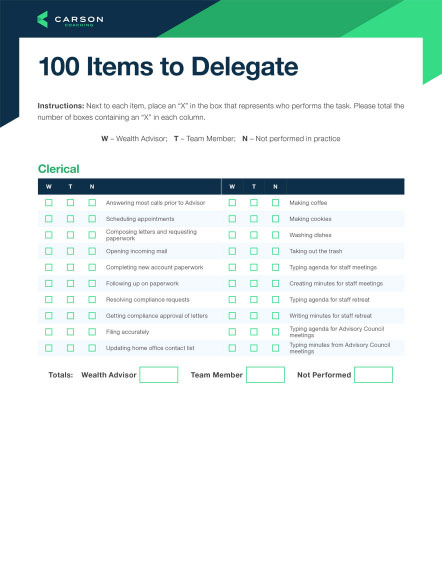It’s inevitable in every industry. Your favorite employee leaves for one reason or another. Yet managers who’ve been “once bitten, twice shy” often find themselves overly cautious when seeking a replacement.
They don’t just become overly cautious – they adopt the mindset of a scorned lover, dwelling on time and money spent “for no reason” and clamoring “why even try again?” Just as it works for the brokenhearted, a reframed mindset and tweak in perspective can work wonders.
Employees leave for a variety of reasons, but most at least added some value during their tenure. When someone leaves your firm, there’s an initial drop in value provided. As much as we don’t want this to happen, it’s impossible to eliminate the possibility. It’s the risk you take when running a business.
While you can’t totally prevent someone from leaving your firm, you can implement a handful of processes and perks to lessen the likelihood. This boils down to identifying clear career paths for your team. The more clarity you have around current and future goals for your firm, the more confidence employees and owners will have in their future at the company.
We break down this win-win situation into two parts:
- Helping a team member thrive in a current role, and
- Helping them grow within the firm in the future.
First Things First: Establish Your Firm’s Goals
Before you look at individual roles on your team, your firm needs to have a strong identity and foundation. Do you know what you’re building toward? What will the firm look like in the next three years? Five? Ten? The answers to these questions will determine how you structure your firm and the type of people you hire. Be honest with your goals and vision. If you like how your firm operates with three team members and want to stay that way, that’s fine – you will just have limited growth opportunities.
If you want to grow exponentially in 10 years, you need to map out how your employees will grow with the firm. A good career path is predicated on a great growth plan. One advisor I coach runs a team of seven. Not only does he know the career paths of those team members for the next 10 years, he knows what his next seven hires will be and when they’ll happen. Of course, this plan isn’t set in stone. But based on where his firm is today and where he wants to be, he’s mapped out the best route to get from point A to point B.
Helping Your Team Thrive in Their Current Roles
While it’s important to have a roadmap, it’s important advisors don’t become too focused on the destination. As long as we’re sticking with the roadmap theme – it’s about the journey, not the destination.
You’re saying, well hey, you just said to know what your firm will look like in 10 years – its end game. When I say it’s about the journey, though, I’m not saying to scrap the destination. No, the destination is your driving factor. But things you do in the present will determine how quickly and successfully you reach your destination.
They’ll pave the way. Any good road trip needs snacks, music and roadside attractions to keep someone motivated, awake and trucking along. Much the same, employees need to stay motivated as they work their way through their career. These “perks” go a step further than the usual list used to attract new hires (Unlimited PTO! Free soda!) Rather, they’re what will keep employees motivated – good pay, good leadership, culture, education, training courses, conferences, etc. All the things that will help an employee not only survive in their role, but thrive. Once a new hire transitions into a committed employee who’s engaged in the mission, bring up unique benefit options with them. Find out what motivates them – money, conferences, vacation. People are motivated differently. Identify what keeps them passionate about the firm and growing.
Don’t get too individualized with employee development options, though – especially in the hiring process. Define role-specific duties that don’t vary, no matter who’s in the role. After you hire someone who can master those requirements, then you can consider offering unique benefits. Any benefit you provide an employee is an investment, not a cost. Whether it’s a tangible or intangible benefit they receive in the present, its intended effects are hopefully reaped in the future.
Helping Them Grow – and Stay – for the Future
Once your employees are thriving in their current roles, it’s time to start thinking about their next steps – and how they can take them. What could the career path look like for each individual? Map out what the next two, three, four positions for this person are. Ideally, this is already mapped out as you go through your hiring process – this way they can hit the ground running once they come on board. It also filters your search to growth-minded individuals – the type of people you want on your team if your firm intends to grow.
When you talk to potential employees, share the vision for your firm and what it’ll look like in upcoming years, and lay out what a potential career path for them might look like. Ask them if it looks exciting. If they say no or would rather settle into a base role and thrive there, that’s fine. Then you get to decide if that fits into your firm’s vision. Away from the hiring process, meet with employees at least once a year to discuss their career path. It makes the most sense to have this conversation during annual reviews. Don’t rush to squeeze it in, though – a performance review is important.
You want to ask questions that will reveal an individual’s capacity and openness to growth. Ask them:
- How are you doing in your role?
- Do you feel like you’re thriving?
- Are you happy with your growth so far?
- What are your career goals?
- What do you envision your career path to look like?
- Do you know what your next position might be?
It should be a conversation, meaning you want to gather feedback from your employees. How do they feel about the career paths offered and the opportunity for career advancement? Is there anything we can improve? Your vision for your firm will steer the conversation, but you want to embrace any feedback.
Aligning With Your Vision
What if an employee suggests they take a new role on the team? It can be easy to become a “yes man” to employees and do whatever it takes to ensure their happiness. You want to accommodate employees, but only to a point. It should never cross the line and interfere with your firm’s vision. Be sensitive to their needs and passion, but let your vision ultimately drive your actions. So check your firm’s vision. Does this role fit into the vision? Is it needed? Will it help reach the firm’s goals? If it does, great! If it doesn’t, it might be best for both parties to split ways. Never alter the vision you’ve laid out for the firm to suit one individual.
It takes a special manager to navigate these tough but needed conversations. To strike a balance between accommodation and determination. Unless your firm is quite large and has a dedicated talent role or team, you are the designated individual.
It might seem like another task you don’t have time for and you let fall to the wayside. However, without defined career paths and individualized benefits, more than just small tasks might fall to the wayside. Working with a coach is one way to make sure your firm still incorporates it. Other training is available, too. Talking with employees to uncover their passions and needs is a skill that can be learned.
There’s no way to guarantee an employee will stay. But taking care of their needs in the now and grooming them for the future is the best possible outcome for everyone involved – you, employees, your firm and your clients.


